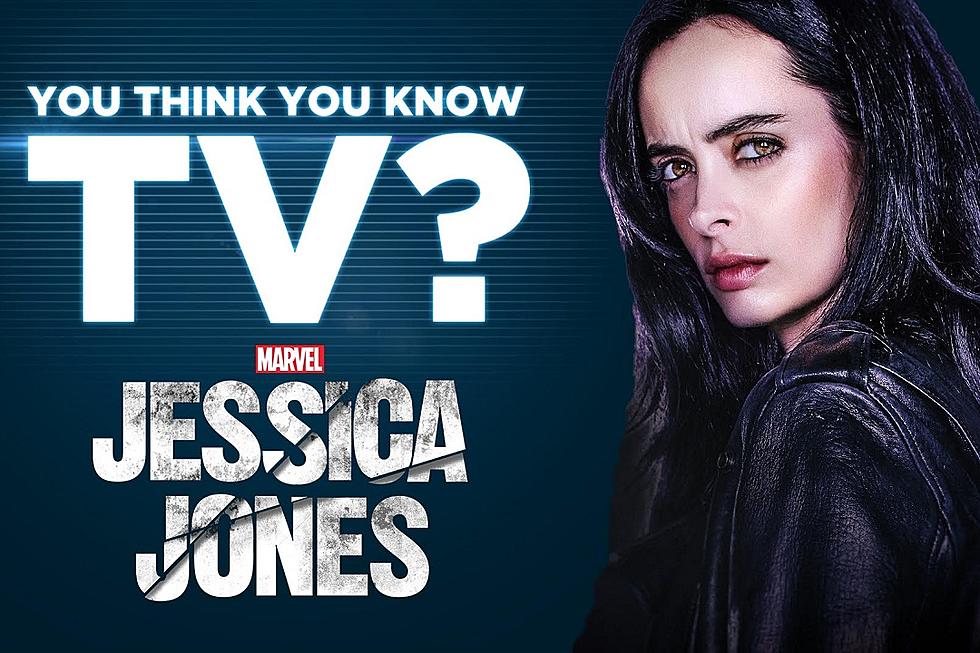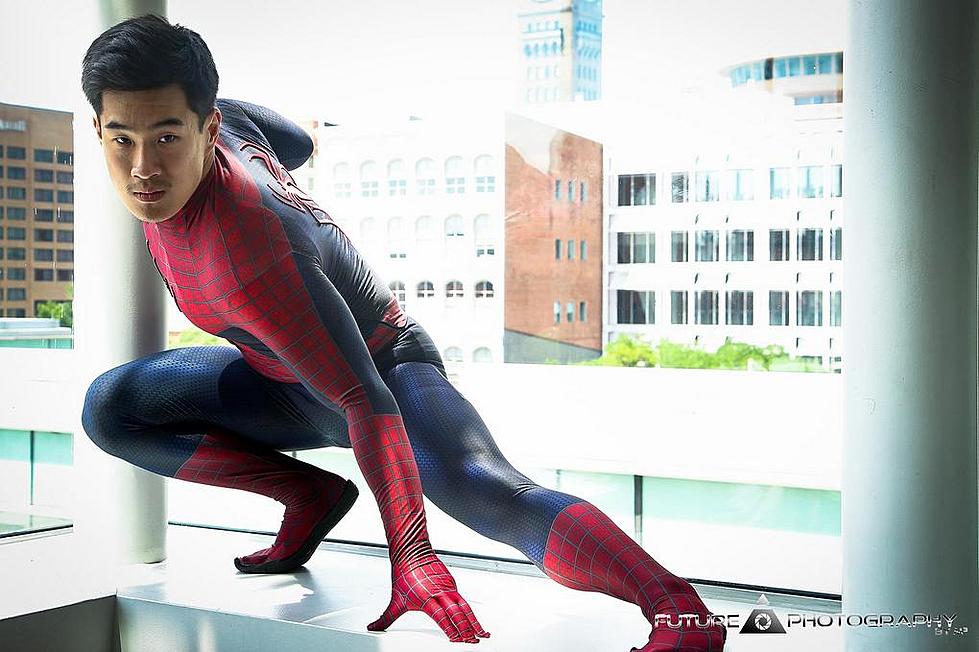
Ask Chris #268: Meet DC’s Answer to Jessica Jones
Q: Who is the closest DC equivalent to Jessica Jones? -- @charlotteofoz
A: For what I suspect is a pretty obvious reason, this is a question that seems to be going around a lot this week, and it's an interesting one. As much as DC has experimented with it, the publisher has never had a lot of lasting success with street-level looks at how its universe functions. And really, that makes sense when you consider that its most famously gritty urban vigilante is also a billionaire who drives around in a rocket car and hangs out with his friends on the moon.
But there is a pretty good answer, and while I can't take the credit for thinking it up myself, it's definitely one that I agree with. If you're looking for a character to fill that role in the DC Universe, then you're looking for Cameron Chase --- and not just because they both have those alliterative initials.
After making her first appearance in Batman, Chase got her own ongoing series by Dan Curtis Johnson, J.H. Williams III, and Mick Gray in 1998, and it's one of those books that's simultaneously a perfect product of its era and a comic that was five or ten years ahead of its time. It's part of that incredible stretch of about five years where DC was doing an amazing job of fleshing out its universe through third-string titles; building bits and pieces that shaped and defined how that world worked, and helped it feel like a cohesive whole. Seriously, if you're ever digging through back issue bins and want to know if a series about a C-lister is worth picking up, check and see if it was part of DC One Million. If it was, then you're probably on the right track.
In the '90s, after things had finally settled down from the shakeup of Crisis on Infinite Earths, books like Justice League International, Suicide Squad and --- most importantly --- Flash had laid the groundwork for a universe based around the idea of legacy. It was the driving force of how heroism was treated in those stories; that there was a grand tradition of superheroic identities being carried on from one generation to the next.
Cameron Chase was part of that, both on a personal level and a functional one. So here's the basics, and feel free to stop me if you've heard this one: She's a tough private investigator with a lot of bad habits who has seen the darker side of superheroics and, despite having powers herself, her past caused her to develop a certain kind of contempt for the whole enterprise.
For Chase, though, the PI stuff was just a background. By the time we meet her, she's just taken a job with the Department of Extranormal Operations, the government agency in charge of dealing with anyone with super-powers. And that, incidentally, is one of the things I love most about that era. Usually when you see government agencies in superhero stories, they all have these really exciting, evocative, names, but the DEO is just sitting there, every bit as boring as any real-world regulatory organization. Even the word "Extranormal," the most loose and awkward word for describing superheroics, feels like something that a committee decided on.
It's a familiar idea taken to its hilariously bureaucratic extreme, even if the guy in charge is a literal skeleton man with a "cyanide touch."
For the record, Director Bones rules.
I'm getting off track a little here, but even that ties into the nature of that late '90s DCU. It's a place where superheroes are routine, to the point where even the secret agents in charge of dealing with them don't get to have a cool acronym, and where they've been around long enough --- and are prevalent enough --- that there are established protocols for dealing with them.
There's definitely a level where that's counterintuitive. I mean, if you're publishing superhero comics, the last thing you want to do is give your readers the idea that they're routine and boring --- even the people in that universe who have been dealing with Superman for a solid decade should still be pretty stoked about seeing him fly out into space to punch out Warworld. Even Aquaman is going to be pretty impressive if he saved your cousin from getting eaten by a shark-man on his vacation, right?
But at the same time, I do think there's value to seeing the world from that sort of Astro City-esque perspective that underscores the core idea of the universe. If we're going to look at heroism as a tradition and a legacy, then it makes sense that there would be protocols in place to deal with everything that includes.
What Chase did so well, though, was walk that balance in a really engaging way. As much as she was completely over the entire idea of superheroics, the missions that she was sent on were always interesting, whether it was dealing with the stripped down, post-Soviet Rocket Reds or being sent on a mission to try to uncover Batman's secret identity --- and shoot down the theory that he's actually a team of ex-Special Forces soldiers rotating through the position.
But where the real drama came from was in the way that she dealt with her own history.
One of the more interesting quirks of the post-Crisis DCU was how it folded its history into a single timeline, and how that left a weird gap in its history. The basic idea was that while there had been the occasional rare superhuman throughout history, the first big explosion of people with powers came during the Golden Age, when the Justice Society formed and fought crime during World War II. Then they just sort of went away until the sliding timeline of "ten years ago," when Superman showed up, saved the space plane, and kicked off the modern heroic age.
It's an interesting idea, and it allows for a history for characters like the Flash --- something that was incredibly important since Wally West defined the idea of "legacy" in that era --- but it also has a weird problem. With "Ten Years Ago" defined as the dawn of the current generation of heroes, and with an increasingly wide gap between the JSA disbanding and now, it raises the question of why there wasn't anything happening in between.
The official answer was that after the House Un-American Activities Committee turned its attention to superheroes and put an end to the Justice Society, they all just went underground for a while (or in some cases were lost in another dimension that kept them young and explained why they all waited until they were like eighty to start having kids).
But if there were always superhumans, there should've been someone running around back then, right? If nothing else, characters like Ra's al-Ghul, Vandal Savage, Martian Manhunter and Etrigan the Demon have a long enough history that it's hard to believe that they'd take a thirty-year vacation.
Chase, along with Martian Manhunter and, of course, Starman, was one of the books that explored that, and the conclusion it came to was that there were superheroes in that intervening period. It's just that they were a disaster to the point where there was no way that they were going to inspire a resurgence of teams.
And in this case, that idea took the form of Cameron Chase's father, the Acro-Bat.
As much as I'm reluctant to have a bat-themed vigilante in the DC Universe before Batman --- it makes Bruce Wayne's moment of window-shattering, terror striking, "yes, father" inspiration a little less cool when he's the second guy to think fighting crime while dressed as a bat is a good idea --- I love the idea that's in play here.
The best thing about it is that by setting the Acro-Bat and the Justice Experience in the late '60s, it recontextualizes Batman '66 as something that actually happened in the DC Unvierse, with a friendlier class of criminal that was focused on bank robberies and deathtraps, and then brings that era to an end when things get capital-S Serious again in the '70s, just like they did in the comics of the era. That blend of the real-world aesthetics being filtered through the in-universe characters and contrasted with the current aesthetic is something that I really like, and it's done really well.
The exclamation point that ended that brief revival --- and the personal tragedy that took the shine off superheroes for Cameron Chase --- was the Acro-Bat's murder at the hands of Dr. Trap, a serial hero killer who tore the elder Chase's throat out with his metal jaw, and rigged up lairs filled with deathtraps made from "guilloutines, piano wire, mustard gas and claymore mines" rather than the semi-deadly hourglasses and giant coffee cups that other arch-criminals used.
With that in her backstory, Chase became a character who wasn't motivated by the simple (and frankly very boring) hate for heroes that you see from other characters. Instead, she had the idea that that costumed heroism was something that got good people killed regardless of their intentions, and invites escalation that wouldn't happen otherwise. It's the same kind of idea that would dominate superhero storytelling ten years later, especially in a Batman project you might've heard of called Christopher Nolan's The Dark Knight.
Like I said, the book was ahead of its time.
The twist, of course, was the Chase had powers herself, but in a nice bit of on-the-nose literalism that actually worked for the book, it was the uncontrollable ability to suppress powers in others whenever she was in danger. It was an interesting plot point that allowed her to interact with threats that looked like they were well above her weight class, and shockingly, it never got old.
Of course, it didn't really have a chance to, either. It shouldn't be surprising, since it's the product of the same era where a book co-written by Grant Morrison and Mark Millar got canceled within a year, but Chase only lasted ten issues --- and one of them was the DC One Million tie-in. This left a whole lot of plots unresolved, including Chase realizing that it wasn't just coincidence that made every metahuman attacker's powers short out.
She'd eventually make a return in the fantastic Manhunter as an old friend of Kate Spencer's, and it was in that book that the Dr. Trap stuff finally got to a resolution... just in time for that book to be canceled, too. If you're curious, both series are well worth picking up digitally.
But even though there's not a whole lot of it, Chase holds up. It's an interesting look at how that universe works, and even though Chase's environment was tied very much to the kind of universe she was living in, one that's more than a little different from the DCU we have almost 20 years later, she's a character who still works, and who could add a whole lot to that universe even now.
Ask Chris art by Erica Henderson. If you’ve got a question you’d like to see Chris tackle in a future column, just send it to @theisb on Twitter with the hashtag #AskChris.
Get to Know Marvel's Answer to Cameron Chase: Jessica Jones!
More From ComicsAlliance




![‘Superman’ #18 Launches ‘Reborn’, Builds On ‘Rebirth’ [Preview]](http://townsquare.media/site/622/files/2017/02/Featured.jpg?w=980&q=75)




